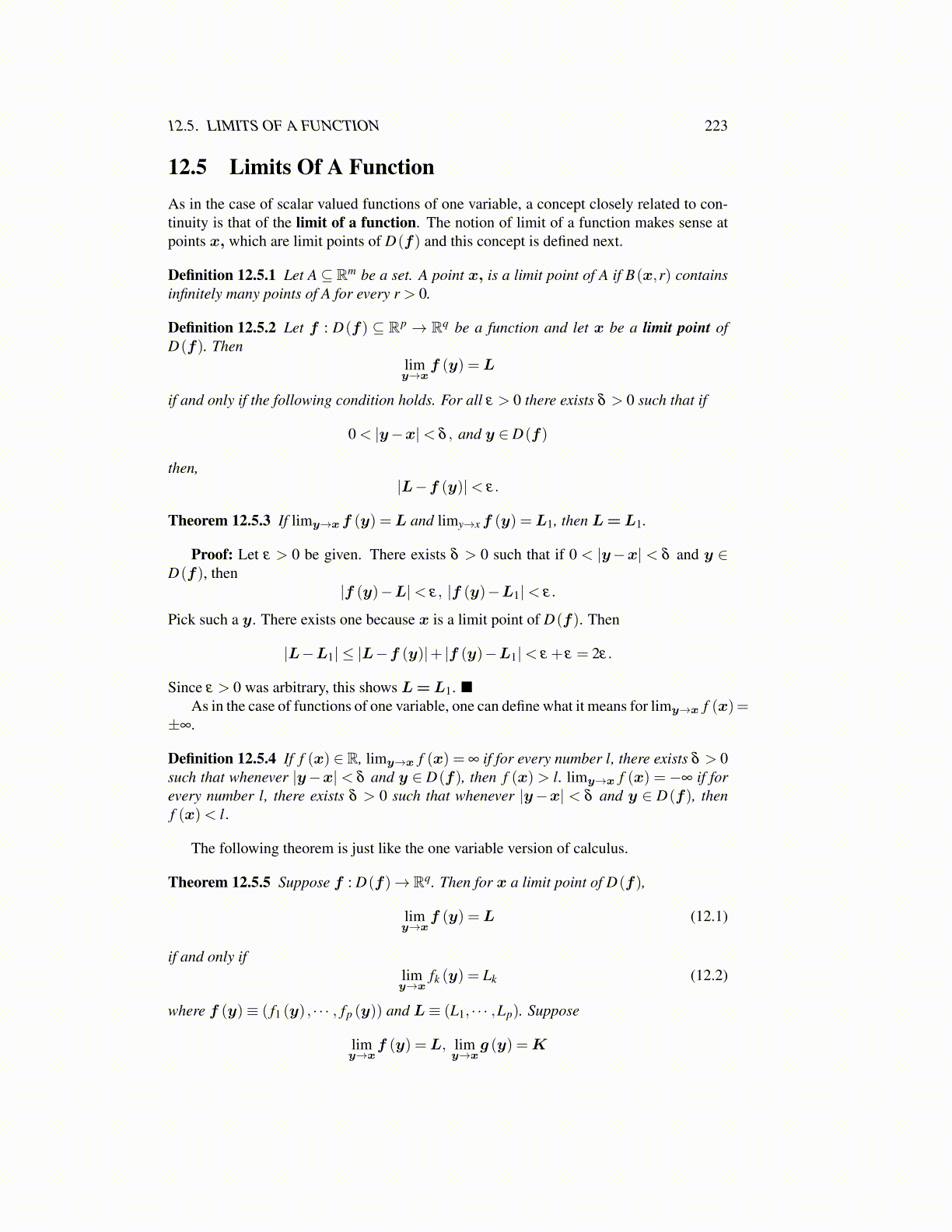
12.5. LIMITS OF A FUNCTION 223
12.5 Limits Of A FunctionAs in the case of scalar valued functions of one variable, a concept closely related to con-tinuity is that of the limit of a function. The notion of limit of a function makes sense atpoints x, which are limit points of D(f) and this concept is defined next.
Definition 12.5.1 Let A ⊆ Rm be a set. A point x, is a limit point of A if B(x,r) containsinfinitely many points of A for every r > 0.
Definition 12.5.2 Let f : D(f) ⊆ Rp → Rq be a function and let x be a limit point ofD(f). Then
limy→x
f (y) =L
if and only if the following condition holds. For all ε > 0 there exists δ > 0 such that if
0 < |y−x|< δ , and y ∈ D(f)
then,|L−f (y)|< ε.
Theorem 12.5.3 If limy→xf (y) =L and limy→xf (y) =L1, then L=L1.
Proof: Let ε > 0 be given. There exists δ > 0 such that if 0 < |y−x| < δ and y ∈D(f), then
|f (y)−L|< ε, |f (y)−L1|< ε.
Pick such a y. There exists one because x is a limit point of D(f). Then
|L−L1| ≤ |L−f (y)|+ |f (y)−L1|< ε + ε = 2ε.
Since ε > 0 was arbitrary, this shows L=L1. ■As in the case of functions of one variable, one can define what it means for limy→x f (x)=
±∞.
Definition 12.5.4 If f (x) ∈ R, limy→x f (x) = ∞ if for every number l, there exists δ > 0such that whenever |y−x| < δ and y ∈ D(f), then f (x) > l. limy→x f (x) = −∞ if forevery number l, there exists δ > 0 such that whenever |y−x| < δ and y ∈ D(f), thenf (x)< l.
The following theorem is just like the one variable version of calculus.
Theorem 12.5.5 Suppose f : D(f)→ Rq. Then for x a limit point of D(f),
limy→x
f (y) =L (12.1)
if and only iflimy→x
fk (y) = Lk (12.2)
where f (y)≡ ( f1 (y) , · · · , fp (y)) and L≡ (L1, · · · ,Lp). Suppose
limy→x
f (y) =L, limy→x
g (y) =K